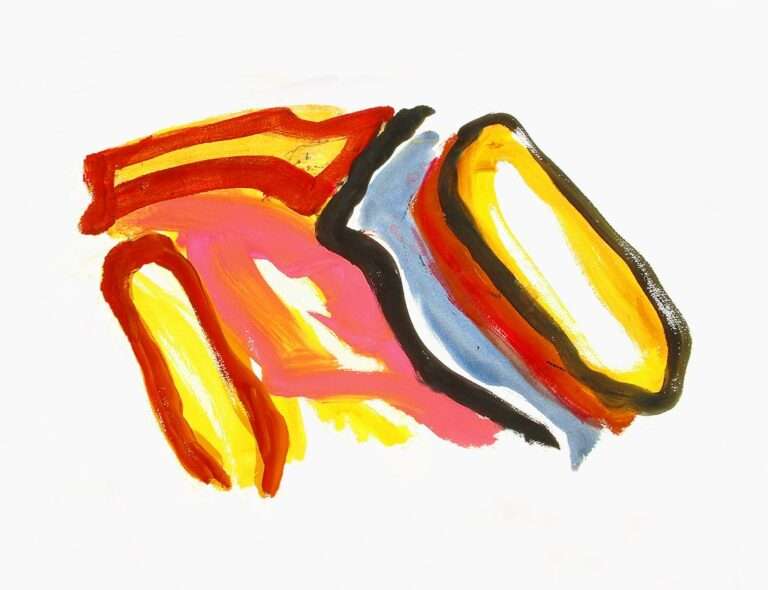How is the use of geometric shapes significant in modern art?

In modern art, geometric shapes have influenced many different movements and styles. They have been important. Artists have used geometric shapes to explore form and space, communicate meaning, and produce visually arresting compositions since the early 20th century.
Key Takeaways
- Geometric shapes have been a prominent feature in modern art, influencing various art movements and styles.
- Modern art movements such as Cubism and Constructivism were heavily influenced by geometric shapes, emphasizing abstraction and structure.
- Geometric shapes in modern art often symbolize order, balance, and harmony, reflecting the artist’s exploration of form and space.
- Abstract art utilizes geometric shapes to convey emotions and ideas, allowing for a wide range of interpretations by the viewer.
- Minimalist art focuses on simplicity and precision, often using geometric shapes to create a sense of purity and clarity in the artwork.
- Geometric shapes are also utilized in sculpture and installation art, adding a sense of dimension and structure to the artistic expression.
- Geometric shapes continue to hold significance in modern art, serving as a timeless and versatile element for artists to explore and express their creativity.
Geometric shapes have allowed modern artists to experiment with new ideas and emotional expressions, allowing them to break free from the constraints of traditional representational painting. This essay will examine how geometric shapes influenced modern art movements, their meaning, and how they were used in abstract, minimalist, sculpture, and installation art. Artists have employed geometric shapes, including squares, triangles, rectangles, and circles, to establish harmony, balance, and order in their compositions. Although these shapes are frequently connected to logic and precision in mathematics, artists have also employed them to convey ideas of transcendence, mysticism, & spirituality. Modern artists have been able to push the boundaries of conventional artistic conventions by experimenting with form, color, and space thanks to the use of geometric shapes in their works.
Geometric shapes have been a potent tool for artists to express their ideas and challenge the status quo, as is evident when we examine their influence on modern art movements. The Growth of Cubism. Cubism, which was founded in the early 20th century by Pablo Picasso & Georges Braque, was one of the most important movements that embraced geometric shapes.
Cubist painters attempted to capture objects in various light, dissecting them into geometric shapes and then piecing them back together in abstracted ways. The Development of Constructivism. The Constructivist movement, which originated in Russia following the 1917 Revolution, is another example of how geometric shapes were influenced. In order to create artworks that reflected the ideals of the new Soviet state, constructivist artists rejected traditional artistic practices and embraced geometric forms and industrial materials.
The movement focused on using geometric shapes to represent functionality, structure, and order, which was a reflection of the social and political changes that were occurring in Russia at the time. A Durable Heritage. Modern artists who continue to investigate the possibilities of geometric shapes in their work bear witness to the legacy of constructivism.
This innovative method of representation had a profound effect on modern art, encouraging creators to experiment with novel perspectives & interpretations of their surroundings. In modern art, geometric shapes have become symbolic of many different ideas and concepts. To represent eternity, wholeness, and unity, for instance, circles have been employed. A circle’s lack of corners or edges conveys a sense of completion and perfection, making it a potent symbol in art.
Circles have been used symbolically by artists like Wassily Kandinsky and Robert Delaunay to explore spiritual and cosmic themes in their works. Rectangles and squares are frequently connected to order, balance, and steadiness. These shapes are perfect for expressing a sense of stability and solidity in art because of their straight lines and right angles, which imply structure and rationality. In order to establish balance and harmony, abstract painters like Piet Mondrian and Josef Albers used squares and rectangles in their works. These forms, which represent their interest in the fundamentals of form and color, came to be central to their artistic practice.
In modern art, triangles have also been used symbolically to convey a variety of concepts, including power, conflict, and spirituality. Triangles are dynamic shapes that, with their strong lines and acute angles, can evoke tension and movement in works of art. In order to communicate concepts of transcendence, revolution, and advancement, artists like Lyubov Popova and Kazimir Malevich investigated the symbolic possibilities of triangles in their works.
Modern artists have been able to visually convey complicated concepts & feelings by using geometric shapes as symbols. Abstract painters have largely relied on geometric shapes to explore form, color, & space in novel ways. By concentrating on the formal components of art, such as line, shape, and color, abstract painters aimed to depart from representational art. Artists could utilize geometric shapes to produce compositions that prioritized visual harmony and pure form, without resorting to representational art. Geometric abstraction was first popularized by artists like Kazimir Malevich and Piet Mondrian, who used basic shapes like squares, rectangles, and lines to create dynamic compositions that highlighted the underlying structure of their paintings. Geometric shapes were used to powerfully create abstract compositions that defied conventional artistic conventions, as seen in the works of Mondrian, “Composition with Red, Blue, & Yellow,” and Malevich, “Black sq\..”.
Abstract painters were able to experiment with new visual effects without depending on well-known subjects thanks to the use of geometric shapes. Through the arrangement of geometric shapes on the canvas, abstract artists were able to convey emotion, rhythm, and movement by concentrating on the formal aspects of art. This method of creating art has had a profound influence on modern art, motivating subsequent generations of creators to explore form and color in original ways. The minimalist movement, which began in the 1960s as a response to the emotional intensity of abstract expressionism, has been characterized by geometric shapes.
Using basic geometric shapes like cubes, spheres, and rectangles, minimalist artists aimed to produce works of art that were reduced to their most basic components. Artists were able to experiment with concepts of space, materiality, and perception thanks to this reductionist method of creating art. Artists like Donald Judd and Sol LeWitt incorporated geometric shapes into their minimalist installations & sculptures, emphasizing precise forms, clean lines, & industrial materials. By utilizing geometric shapes, minimalist artists were able to produce works of art that were both physically striking & prompted viewers to pause and think. A greater interest in mathematical systems and principles was also reflected in the use of geometric shapes in minimalist art.
By utilizing geometric shapes to explore concepts of symmetry, proportion, and repetition, artists aimed to produce works of art that were founded on logical order and logic. This method of creating art has influenced artists who continue to investigate the possibilities of geometric shapes in their work, leaving a long-lasting impression on contemporary art. investigating movement, mass, and volume. Large-scale sculptures that powerfully interact with their surroundings have been created by artists like Anish Kapoor and Richard Serra, who have utilized geometric shapes like ellipses, spirals, and circles. By using this method, sculptors can explore concepts of mass, volume, and movement while encouraging viewers to interact with their works on a physical level. environments that are immersive.
Geometric shapes have also been used by installation artists to create immersive spaces that subvert our understanding of form and space. Geometric shapes like spheres, cones, & cubes have been used by artists like Tara Donovan and Olafur Eliasson to create site-specific installations that encourage spectators to experience space in novel and inventive ways. Installation artists are now able to produce visually arresting and conceptually complex works of art thanks to this method. Overstepping Boundaries. Artists have been able to experiment with traditional artistic practice and find new ways to interact with architectural spaces through the use of geometric shapes in sculpture and installation art.
Through the utilization of geometric shapes, artists have been able to produce works of art that allow spectators to engage with their surroundings and gain fresh insights into form and space. To sum up, geometric shapes have influenced artists working in a variety of media & styles, and they have been central to modern art movements. Geometric shapes have been a vital tool for artists to explore form, space, and symbolism in their work, from Cubism to Constructivism, abstract art to minimalism, sculpture to installation art. In addition to challenging established aesthetic norms, the use of geometric shapes by artists has produced visually arresting compositions that elicit thought & reflection from the audience. Modern artists who are still exploring the possibilities of geometric shapes in their work demonstrate the geometric shapes’ ongoing significance in modern art.
Geometric forms give artists a rich visual language that enables them to express difficult concepts and feelings visually, whether they are employed symbolically or formally. As we consider what lies ahead for modern art, it is evident that geometric forms will always be essential in influencing artistic endeavors and expanding the realm of imaginative possibility.
FAQs
What is the significance of geometric shapes in modern art?
Geometric shapes in modern art are significant because they represent a departure from traditional, realistic representations of the world. They allow artists to explore abstract concepts and create works that emphasize form, line, and color.
How do geometric shapes contribute to the visual impact of modern art?
Geometric shapes contribute to the visual impact of modern art by creating a sense of order, balance, and harmony. They can also convey a sense of precision and structure, adding a dynamic and contemporary feel to the artwork.
What are some examples of artists who use geometric shapes in their work?
Some notable artists who use geometric shapes in their work include Piet Mondrian, Wassily Kandinsky, and Kazimir Malevich. These artists are associated with the De Stijl and Bauhaus movements, which emphasized the use of geometric forms in art and design.
How do geometric shapes reflect the modernist ideals of simplicity and clarity?
Geometric shapes reflect modernist ideals of simplicity and clarity by stripping away unnecessary details and focusing on essential forms. This approach aligns with the modernist belief in the power of rationality and the pursuit of universal truths.





